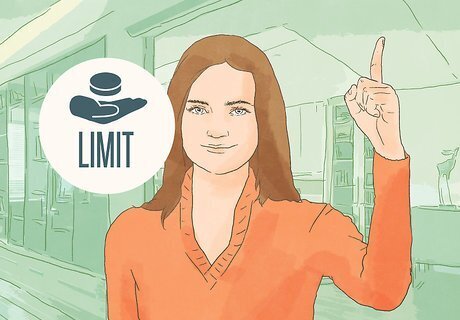
views
Negotiating the Price

Start out with a phone call. Car dealers want to make buying a car an emotional experience for you, since they can use that state of affairs to manipulate you into spending more money than you otherwise would. Avoid this problem by making your initial investigation over the phone: call the dealership, specify the car you’d like, and ask them if they’re willing to sell it for a little lower than your price-point. However, it’s still likely that many dealers will insist that you come in to the dealership before they talk money.

Make a strategically low offer first. Make your first offer so that the highest amount you’re willing to pay is at the middle of your offer and the dealer’s price. For instance, if the dealer wants to sell the car for $3,500, and you don’t want to spend more than $3,000, put your first offer in at $2,500. Then, you and the dealer can negotiate back and forth and end up near $3,000. If you make an initial offer of $3,000, the dealer will almost certainly expect you to pay more for the car—and they’ll likely talk you into it.

Mention competing bids from other dealerships or online car sites. Before you visit the dealership, call around and check online to see how much money comparable cars sell for. Then, when speaking with a dealer, bring up the fact that you are aware of other locations from which you could buy the car, and perhaps even save money doing so. For example, if the dealer you’re speaking with insists on $10,000 for a new vehicle, but you can say “The dealership two towns over said they could let me have it for $9,000,” your dealer may compromise and lower their price.

Focus on negotiating the purchase price. Dealers may try to distract you or convince you to pay more by bringing up issues like a trade-in vehicle, financing a loan through the dealership, or setting up a series of monthly payment plans. While none of these topics are bad in themselves, don’t get sidetracked until you and the dealer have agreed on a purchase price. Dealers will often lower the price of a new car if you trade your old car in. This may not be as good of a deal as it seems at first, though: dealers often subtract less money from the new car’s purchase price than the genuine value of the trade-in.

Mention any dissatisfying problems with the car. If you noticed any problems with the car—whether when visually inspecting or while test driving it—now is the time to bring those up. Make it clear that you believe the problems you’ve noticed should result in a price reduction. Relevant problems would include any scrapes, dents, or rust on the body of the car, and any problems with handling, acceleration, or braking while driving. If necessary, bring up the Blue Book value of the car, and also any comparably priced cars sold over CraigsList.

Don’t seem overly enthusiastic about the car. When you first speak with the dealer, and while you’re inspecting the vehicle, don’t seem too interested in the car. Dealers may take that as a sign that they can charge more for the car. Say that it’s alright, but you still have some concerns to discuss before you make a firm decision. If you keep talking about how much you love that car, or how you’ve always wanted that type of car, the dealer will begin to think that you’ll pay any dollar amount for the car. Don’t get too attached to any specific car, and always be willing to walk away if the price gets too high.

Stay strong on your offer. If the dealer won’t meet your price-point, say it’s more than you wanted to spend, and that you know you can find a similar car for a better price. Be willing to walk away if the dealer refuses to drop the price to an amount you’re willing to pay. Remember, there are always other cars out there, and you shouldn’t be overcharged for the vehicle you want. Sometimes, if the dealer sees that you will walk away, they will match your offer. Dealers have pressure on them to make sales, so they may give in and lower the price after enough negotiation.
Researching Before You Buy

Find the Kelley Blue Book value of the car you want to buy. The Blue Book is a great resource for anyone looking to purchase a used car. You can specify the year, make, and model of the vehicle in question in order to find out an accurate assessment of its value. Access the Blue Book online at www.kbb.com. This way, when you speak to a dealer about a car, you’ll have a good estimate of how much it’s actually worth.

Check Craigslist and other local classifieds. This will allow you to see how much money cars similar to the one you’d like to purchase are selling for. Used vehicles don’t always sell for the exact Blue Book value, and knowing how much comparable cars actually sell for will help you negotiate with the car dealer. Craigslist and other classified ads can also reflect pricing differences based on region. For example, while a pickup truck would be practical (and so cost less, due to its availability) in an agricultural region, it would be a detriment (and so cost more, due to its scarcity) in a large city.

Go to the dealer with cash. Especially if you’re negotiating for a used car, dealers are much more likely to go down in price if you have cash. A customer willing to pay in cash will mean fewer complications in the purchasing process for the dealership.

Set a price-point in your head. Give yourself a certain amount of money that you’re willing to spend on the vehicle, and be willing to walk if a dealer demands more money. If you begin negotiating with the dealer without a specific price-point in mind, you’ll likely end up spending more than you intended. Of course, your price-point needs to be reasonable and well-informed. If you insist that you won’t pay over $5,000 for a new $20,000 vehicle, you’ll be going home empty handed.
Inspecting the Vehicle

Look over the outside of the car. Before you start talking money, take a slow walk around the car. Look for any nicks, marks, or scratches—cosmetic details that won’t reflect serious damage but may allow you to negotiate a lower price. Then, inspect the entire vehicle frame (including its underside) for rust. At this point, you can check out the tires. Look to see if all four tires match and are evenly worn. If not, you’ll likely end up needing to buy new tires before long.

Take a look at the engine. Even if you don’t know much about cars, you should still check under the hood. Look to see that there’s no rust, and jiggle the hoses and wires to make sure that they’re all tight and in good condition. Check the vehicle’s fluids—including oil, brake, and power steering fluid—and make sure that they’re all full. You’ll be able to quickly spot any serious problems with the car, and you’ll also show the dealer that you’re concerned about the quality of the vehicle.

Test drive the car. Any dealership will allow this, and any person selling their private car should do the same. While test driving, note any problems with the car. For example, note if the brakes feel like they need some work, if the interior needs a good cleaning, or if the car has a few scratches and dings. Use these minor problems to negotiate price with the dealer. Get the car out on a large street or highway and accelerate up to at least 60 mph (97 km/h). Make sure that the vehicle accelerates smoothly, and you don’t hear any clunking or grinding sounds.
















Comments
0 comment